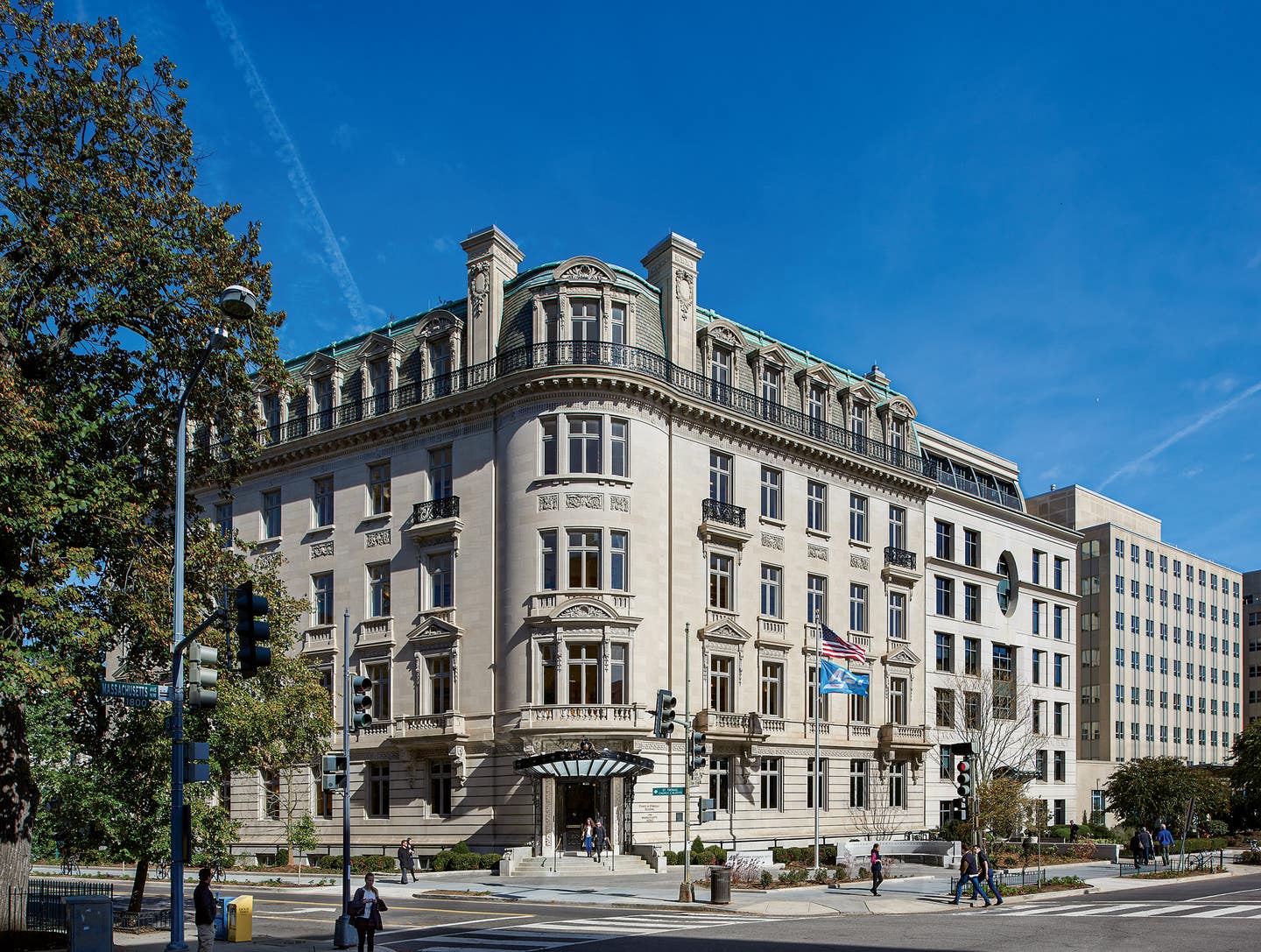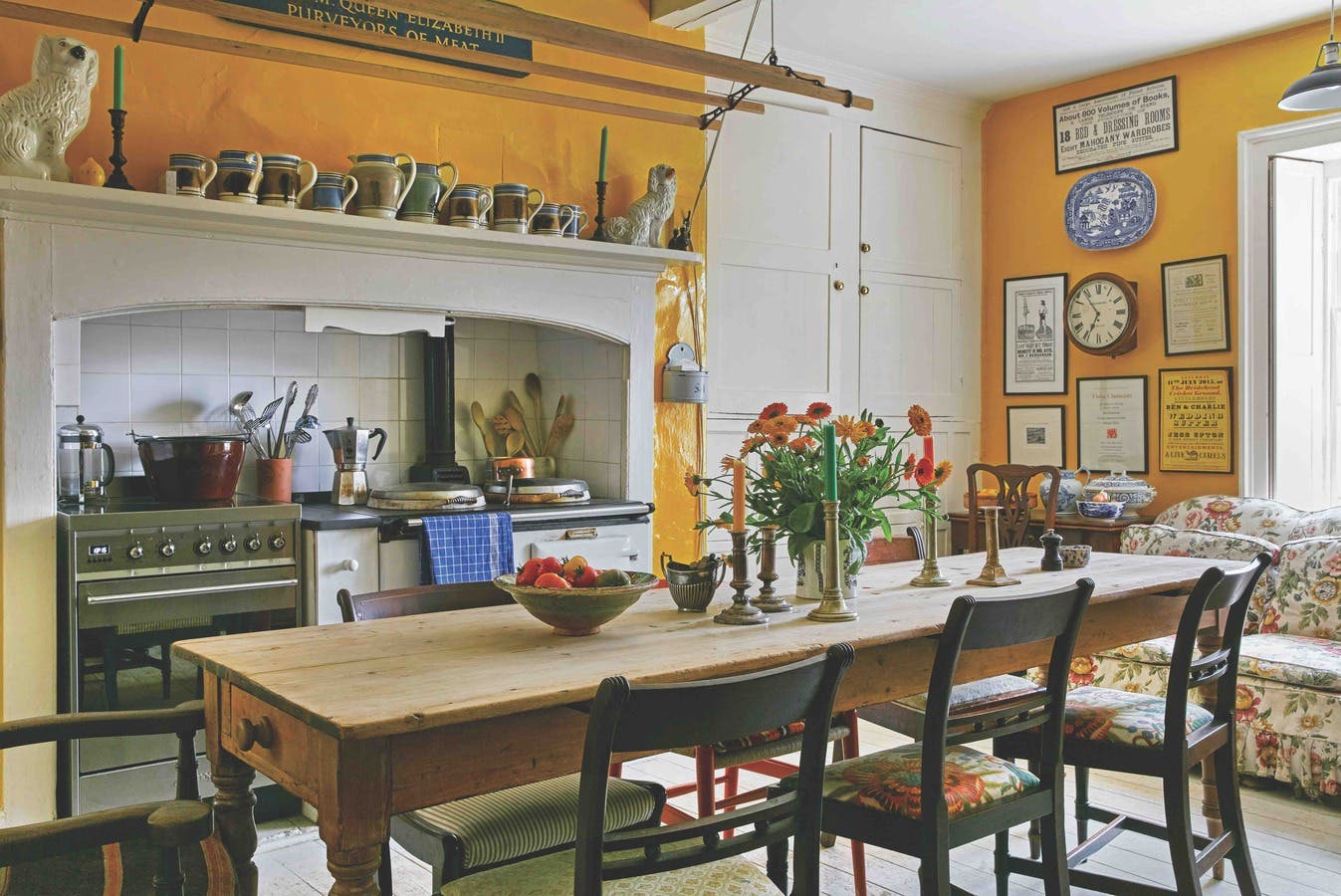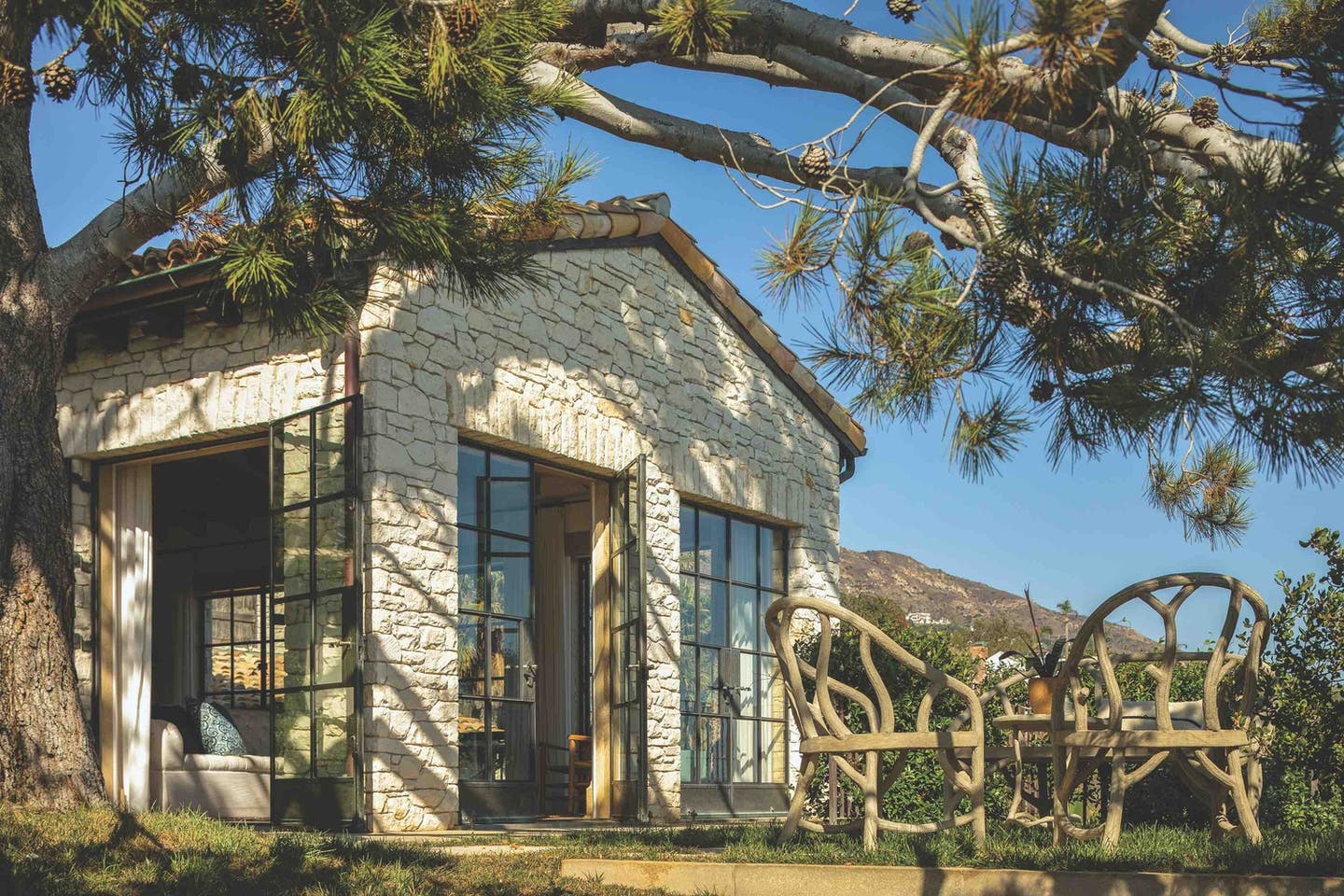
Restoration & Renovation
Beaux-Arts Revamp
Project 1789 Massachusetts Avenue
Architect Hartman-Cox Architects
Interior Design Architects CORE architecture + design
Landscape Architecture Firm Moody Graham Landscape Architecture
The Beaux-Arts building located at 1789 Massachusetts Avenue in Washington, D.C., has served many tenants since it was built in 1915. Until recently, they included the National Trust Historic Preservation (NTHP), which continues its commitment to the building’s care. Today, it is home to American Enterprise Institute (AEI), a conservative think tank for public policy research. According to project lead Graham Davidson of Hartman-Cox Architects, the organization had been looking for new headquarters when the NTHP decided to vacate. “AEI wanted more space but they also wanted their own identity,” he notes. “It was a ready-made, distinctive building that just needed retrofitting for their use.”
Designed by French-American architect Jules Henri de Sibour, the structure was originally residential in function. The McCormick Apartments housed one 11,000-square-foot units per floor, as well as servants’ quarters. When the NTHP sold to AEI, it was agreed the Trust would hold a perpetual historic easement on the property, which would include not only the facade but also the primary spaces on each floor, plus the interior corridor wall. It ensures anything done to those rooms is subject to the Trust’s approval. “They wanted the fabric to remain as intact as possible,” Davidson says, “so we had to not only renovate and re-core but also figure out how to make subtle interventions to make the building accommodate contemporary office use and all of their staff.”
Though ideal in appearance and location, the building was not quite big enough for AEI’s needs. “We were down a considerable number of square feet,” Davidson explains, adding that the solution was to add a basement beneath the entirety of the building—a massive undertaking. “We had to do this with basically no movement on the façade, which is limestone and susceptible to breakage. And once you break a piece of limestone, there’s no fixing it. So the control measures were extremely stringent.” The work entailed underpinning all of the structural columns and exterior walls, and excavating down a level to accommodate a new commercial kitchen, some mechanical equipment, and additional office space. The portion of the floor plate given over to the servants’ quarters was torn out and rebuilt to include elevators, a stair, and restrooms.
A Restored Exterior
The entire exterior was restored. Much of it was in good condition with a few notable exceptions: cracks at the window heads, chipped or spalled limestone, inappropriate patching material from previous repairs, joints in need of repointing, and a compromised entry canopy. The wood window sashes were taken offsite to be refurbished, though the glazing was left unaltered. “A lot of other owners would have wanted to seal them up and put storm windows on the outside to improve interior conditioning but AEI didn’t want to do that,” Davidson notes. “They wanted operable windows, although we did weatherstrip them so they wouldn’t be so leaky.” Metal fabricators restored the wrought-iron canopy over the main entry, shoring up the structure and replacing broken glass; after its installation, new lighting was added above for nighttime appeal.
Though the building had been repurposed for office use in the late 1930s, the original interior walls were still standing. To keep the rooms looking as much like the originals, existing partitions were left in place. Davidson notes that the conventional office has either an open floor plan or one that is broken into many offices and cubicles. This was neither. Instead, there are several fairly large rooms designed to hold seven to ten people at a time. “No one would be getting a private office,” he says, “but the interns wouldn’t need to sit shoulder to shoulder.” New partitions were custom designed to be less than two-thirds of the ceiling height, so the eye travels above them to grant views of the entire volume. They were also designed with the staff in mind. “The design of the workspaces was a juggling of many different factors,” Davidson notes. “We wanted to serve the employees with private work stations, while maintaining the look of the original rooms.”
The original building included a central stair wrapped around a cage elevator with windows opening to a light well. During the mid 20th century, the elevator shaft had been enclosed and the windows removed. Because AEI needed more than one elevator, and they wanted to encourage people to use the stairs, that elevator was removed to open the stair visually and to extend it up to the penthouse and down to the basement. Now the stair reaches all levels and is more open and bright. Fortunately, the marble used for the treads and risers is fairly common and still available today, which aided in their restoration. According to Davidson, the metal railing is not a replica from that era but it has the right character.
The first floor had already been modified in the past; this project included removing a few columns to make way for an auditorium as well as a dining room. That floor also includes a library, several meeting rooms, and a second kitchen—food service was a high priority. All of the herringbone-patterned white oak floors and moldings were restored, though the latter had to be replaced because the brown coat in the plaster contained asbestos. During asbestos removal, the area needed to be cordoned off and have special conditioning, which slowed down the work considerably. Then, all of it needed to be repaired by experts. “We ended up having three or four different plaster workers onsite because there was so much work to do that one company couldn’t keep up with it,” Davidson explains.
The scope of the work also included expanding the penthouse level to make room for the bulk of the mechanical equipment, as well as a function hall and a roof terrace. The new penthouse dormers are intentionally spartan. And by sloping the walls, the visual impact of the penthouse is minimized. The enclosure now includes passenger and service elevators, cooling towers, an air handling, boilers, and exhaust fans. Of note is the way in which the perimeter walls were sited to align with the structural columns below. Doing so pushed the penthouse back about 20 feet from the roof edge—again to minimize its visual impact.
Maintaining Features
Of course, much of what the pubic sees of the building is from the street level, which means the plaster ceilings, with their decorative details and central lighting fixtures, were a special consideration. To maintain those features, fire suppression lines were routed through interior partitions and sprinkler heads were mounted on side walls. The ceilings were repaired, patched, and painted, and molds were made from existing profiles to cast missing elements. Additionally, new wall sconces were added for uplighting.
AEI also needed an accessible entrance. “Our preference is to have everyone come to the front door but there are a number of steps there, and we couldn’t figure out how to make it accessible without ruining the look of the building,” Davidson explains. The solution was to add a new entrance on P Street. It opens into a gallery that leads to the auditorium, a main public space. The entrance was created by turning an existing window into a door by lowering the sill to floor level and installing a lift that moves users from the sidewalk level to the first floor. The landing is supported independent of the building for easy modification or removal in the future.“It was huge challenge to provide accessibility in a credible way,” Davidson recalls. “Previously the only way was through the service alley, which is not acceptable.”
After one-and-a-half years of design work, and roughly two-and-a-half years of construction, Jules Henri de Sibour’s Beaux-Arts masterpiece is ready to serve its occupants for another century, while pleasing the eye of all passersby. “It was an honor to work on a building of such stature,” Davidson concludes. “It was interesting to take a 100-year-old building and not only restore it but also retrofit it for very contemporary uses. It wasn’t just a simple rehab. It’s not an usual thing for us to do but it was much more complex.”








